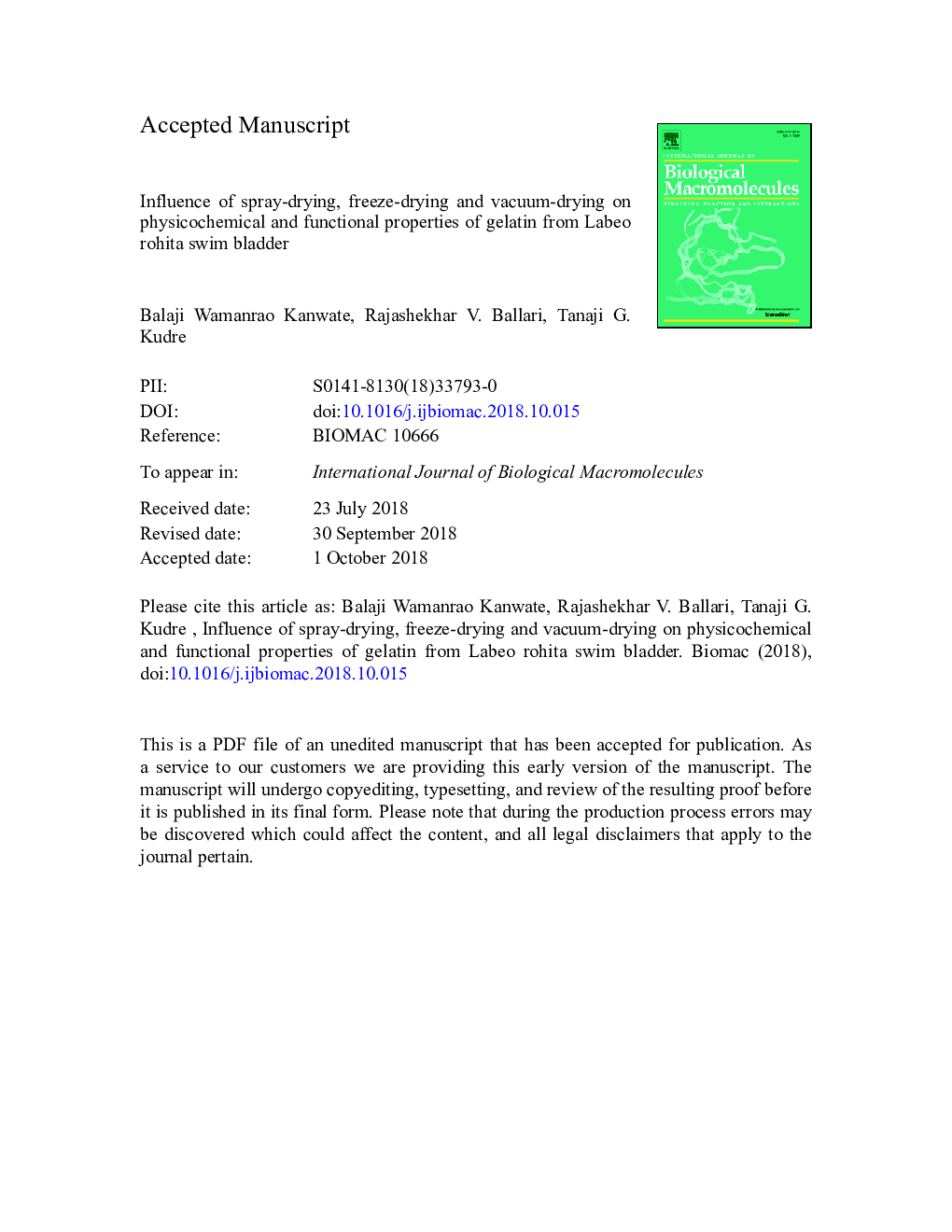| Article ID | Journal | Published Year | Pages | File Type |
|---|---|---|---|---|
| 11010955 | International Journal of Biological Macromolecules | 2019 | 32 Pages |
Abstract
Influence of different drying method on yield, physicochemical and functional properties of gelatin from rohu (Labeo rohita) swim bladder were investigated. Freeze-drying presented the highest gelatin yield (54.51â¯g/100â¯g, dry weight basis), followed by vacuum-drying (48.95â¯g/100â¯g) and spray-drying (41.76â¯g/100â¯g), respectively (Pâ¯<â¯0.05). All gelatin samples showed glycine as the major amino acid followed by proline, glutamic acid, alanine, arginine and hydroxyproline, respectively. Freeze-dried gelatin (FDG) and spray-dried gelatin (SDG) showed α (α1 and α2), β-chains and γ-chain as the predominant components, whereas an absence of β- and γ-chains found in vacuum-dried gelatin (VDG). FTIR spectra revealed that the loss of the triple-helix was found in all gelatins which indicated the conversion of collagen to soluble gelatin. FDG and SDG had the highest surface hydrophobicity, protein solubility, emulsifying, foaming and gelation property than VDG (Pâ¯<â¯0.05). Moreover, SDG showed slightly higher surface hydrophobicity, protein solubility, emulsifying and foaming properties as compared to FDG (Pâ¯<â¯0.05). However, no significant difference was found in gelation properties of FDG and SDG (Pâ¯>â¯0.05). Therefore, freeze-drying or spray-drying could be an appropriate drying method for preparation of gelatin from rohu swim bladder with better functionalities.
Keywords
Related Topics
Life Sciences
Biochemistry, Genetics and Molecular Biology
Biochemistry
Authors
Balaji Wamanrao Kanwate, Rajashekhar V. Ballari, Tanaji G. Kudre,
